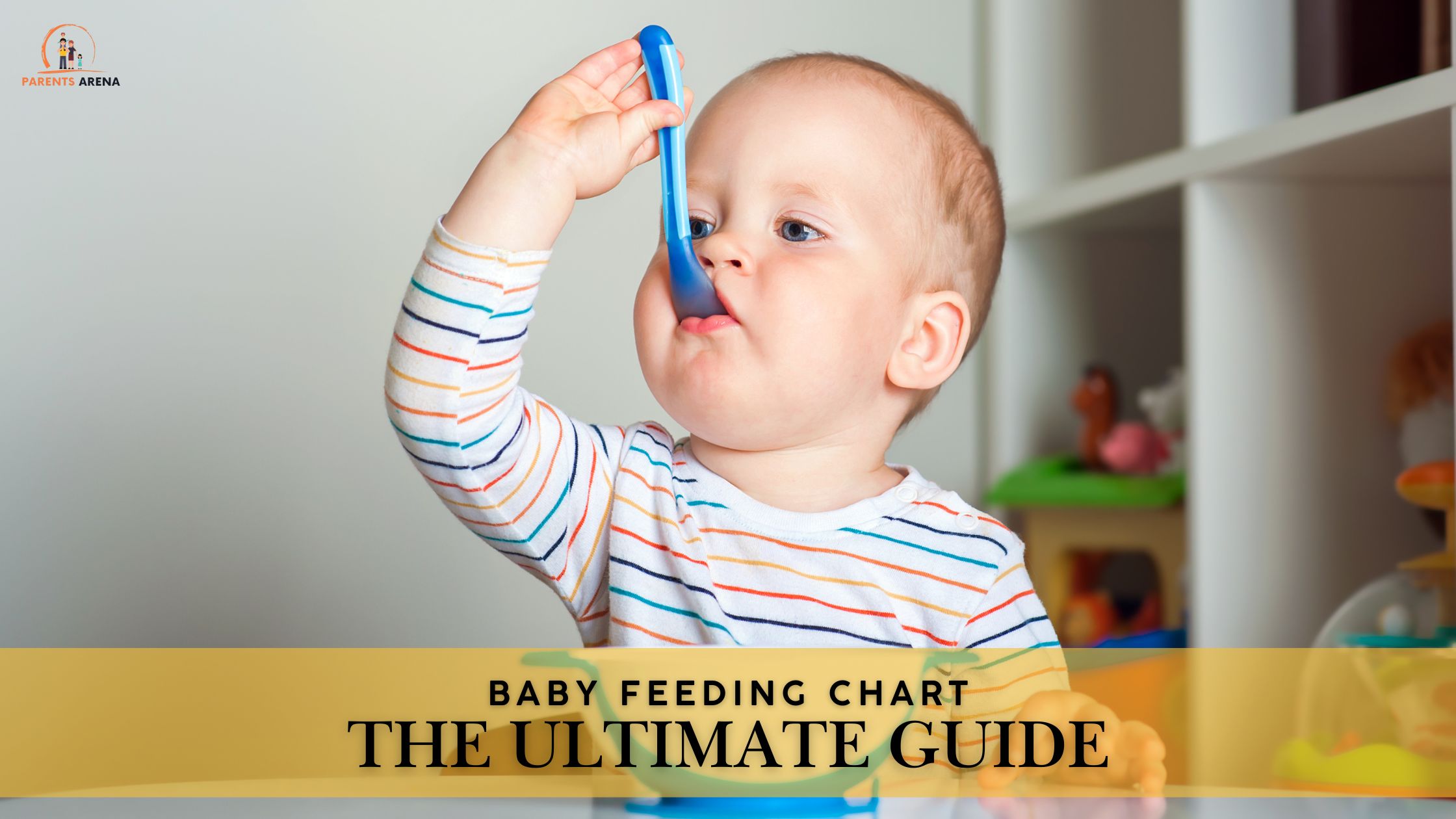Feeding your baby is one of the most important duties of a parent. When to feed, how much to feed, and what to feed become a mess with first-time parents. A baby feeding chart is just the thing to help you start with the techniques of nurturing your baby in the various growth stages.
This blog will address baby feeding tips, partially including the formula feeding charts and feeding charts by age. Whatever feeding modality you use, be it breastfeeding, formula-feeding, or starting solids, this baby feeding chart guide may help you keep your baby well-nourished.
Importance of a Baby Feeding Chart
Babies proliferate, and their nutritional needs differ from stage to stage. A baby food chart helps you:
- Learn how much breast milk or formula your baby needs
- Prevent overfeeding and underfeeding
- Know when to start new foods
- Keep track of your baby’s feeding schedule
Now, let us take a look at the feeding chart by age.
Baby Feeding Chart by Age
Newborn to 1 Month
Feeding Type: Breast milk or formula
How Much?: 1.5 to 3 ounces per feeding
How Often?: Every 2 to 3 hours (8-12 times a day)
Tips: During the first month, feedings happen often and in small amounts. A newborn will show signs of hunger by sucking on his hands or crying.
1 to 3 Months
During months 1 to 3, one would feed the infant with breast milk or a formula where the infant consumes about 3 to 4 ounces at a feeding and fed within every 3 to 4 hours. Feeding is getting even more predictable during this time. Remember to burp your baby after every feeding to prevent building up gas.
4 to 6 Months
From 4 to 6 months, breast milk continues to be the mainstay for babies with some formulae. They are likewise beginning to try solid food. Newborns especially consume approximately 4-6 ounces each time and do this almost every 4-5 hours between feedings. You’ll want to begin teaching solids gradually with something straightforward like mashed banana or pureed apple with breast milk or formula or rice cereal mixed with breast milk. Be on the watch for your baby’s enthusiasm for solids; symptoms can be an interest in food and an ability to sit with support.
6 to 9 Months
Breast milk or formula still comprises very important bases of their diets from 6 to 9, whereas they have started diversifying their menu into a wider variety of solids. Most babies would be using between 6-8 ounces on a feeding interval of 4-5 hours. Soft fruits, cooked vegetables, oatmeal, and yogurt are examples of solids in this stage. Introduce any new food, one by one, to check the baby for any allergic reaction. Honey, whole nuts, and cow’s milk are also excluded.
9 to 12 Months
Between the ages of 9 and 12 months, babies are increasingly feeding on solids but are still accompanied by breast milk or formula. Per feeding session, babies drink on average 7-8 ounces every 4-6 hours. Their solids should be soft and bite-sized- preferably scrambled eggs, pasta, cheese, and well-cooked vegetables. To encourage self-feeding, one can provide finger foods and give sippy cups for water to allow hydration and independence at an early stage.
Formula – Baby Feeding Chart
If your baby is on formula, here’s a brief guide to the amount of formula required at diverse stages:
Indicators That Your Baby Is Getting Sufficient Food
Babies don’t give verbal clues when they feel full; here are some other clues to look out for:
Your baby is growing steadily in weight.
Your baby must wet six or more diapers each day.
Your baby appears bright-eyed and content after feeding.
Your baby sleeps well in between feeds.
When To See The Doctor
If you notice any of the following signs, please contact your pediatrician:
- Your baby refuses to eat or is having trouble swallowing.
- Your infant is not gaining adequate weight.
- Your newborn has runs, vomiting, or additional allergic responses to some meals.
- Your baby looks hungry after feeding regularly.

Get-in-touch
A baby-feeding chart doesn’t have to be an overly complicated task. Baby feeding charts are simple guides that allow for settings when feeding your baby with the right nutrition per stage. Just remember that every baby is different; therefore, trust your intuition and consult the doctor if anything concerns you.

